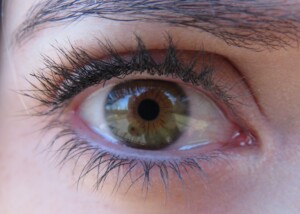
If you’ve read that epiphora in one eye can be caused by a sinus tumor, you’re certainly hoping that it’s just benign sinusitis causing all the watering in that one eye.
Epiphora in just one eye is, obviously, more alarming than excess watering that simultaneously affects both eyes.
A tumor may come to mind for many people when the excess tearing or watering affects only one eye—since a tumor can easily be imagined to be in just one nasal cavity.
Sinusitis is an extremely common and benign problem.
“Sinus congestion and nasal congestion, if more severe on one side, can block the drainage of the nasal lacrimal duct,” says Dr. Stacey Silvers, MD, of Madison ENT & Facial Plastic Surgery in NYC, who is board certified in otolaryngology; one of her specialties is sinus surgery.
Dr. Silvers continues, “This duct goes from the eye and drains our natural tears into the nose.” The duct also goes by the name lacrimal gland.
“This explains why we are congested when we cry as we produce more tears and the nose is getting full. Without this duct the eyes would run all the time.
“Epiphora is a blocked nasal lacrimal duct. The duct can be narrow over time genetically but can also be congested at the level of the nose.
“Bad allergies, sinus infections, colds and polyps can affect the duct’s ability to properly function.”
It’s fair to point out that a lacrimal gland tumor can cause epiphora. However, this kind of tumor is exceedingly rare. How rare?
Only hundreds of patients with lacrimal gland cancer are in the National Cancer Institute’s epidemiology program database — spanning several decades.
To put that in context, the incidence rate is about 0.072 per 100,000 people
How many people do you think have had sinusitis over any 30-year period?
How many people right now, as you’re reading this, have sinusitis?
You may be one of them, and your one-eye epiphora is significantly more likely to be caused by this common condition.
What about a sinus tumor?
A tumor can develop in the sinus cavity, but again, these are very rare, to the tune of about 2,000 new diagnoses each year in the U.S.
If you have sinusitis that’s causing epiphora in one eye, you’ve certainly had other related symptoms within the timeline of this particular symptom development and course.
Those symptoms would be the typical ones that come with a cold or sinus infection:
cough, scratchy throat, stuffy nose, runny nose, nasal pressure, forehead pressure, mild headache, even an ache in the legs — something that a bad cold can cause at its inception.
Solution to Sinusitis Causing Epiphora or Watering in One Eye
Dr. Silver says, “Decongestants (like Sudafed and OTC nasal steroid sprays) can help to allow the duct to unblock.
“If the symptoms persist you should see an ophthalmologist to examine the function of the tear ducts.”














